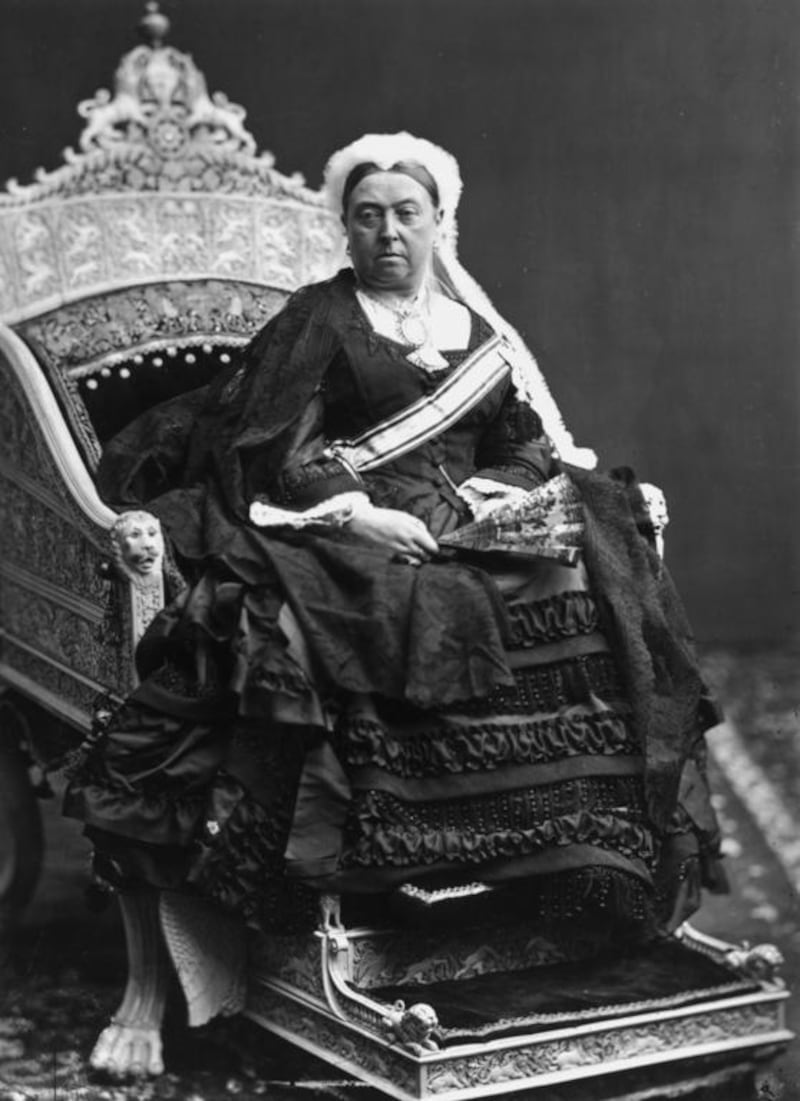The English novelist Anthony Powell once suggested that the reason why such a large majority of Victorian people were so prudish was because a small minority of them was so riotously uninhibited in their behaviour.
As evidence in support of this argument, he advanced the fact that, in a world whose public art declined to acknowledge that bodily functions existed, any Eton pupil returning to the school from Paddington station at the start of the summer term would scarcely be able to make his way along the platform, such was the press of jostling prostitutes. The effect on the nearby crowd of mothers, governesses and younger siblings would have been that of a Jane Austen heroine looking up from the card table to tell a dirty joke she had just heard from the gardener’s boy.
Meanwhile, the complexity of public attitudes towards the human body – the subject of Kathryn Hughes’s deeply entertaining book – was such that the average Victorian novel sometimes seems to be written in a kind of code, so determined is the average Victorian novelist not to raise a blush on what Dickens witheringly called “the cheek of the young person”.
Hughes has clearly thought long and hard about this paradox (which, it should be pointed out, was much less of a paradox to the Victorians, most of whom seem actively to have relished these prescriptions on what could and couldn't be said, and the challenges they offered to their art). And so the preface to Victorians Undone describes it as an "experiment" aimed at determining what happens to biography when you see it from the angle of "mouths, bellies and hands", and hoping, along the way, to bring "a certain lumpiness" to a succession of lives generally smoothed down by canonical treatment. The bedroom, obviously, is ransacked for clues, but so, too, are the slop-pail, the protocols of Victorian obstetrics and a whole range of shibboleths relating to touch, gesture and even the rules governing the growth of facial hair.
As for how this experiment is to be conducted, Hughes proceeds by way of a series of case studies: the death of Lady Flora Hastings, whose phantom pregnancy caused such a scandal at the young Queen Victoria’s court; the beard grown by the elderly Charles Darwin, which led to the young Prince of Wales failing to recognise him at a Royal Society soirée; the possibility, disputed by biographers for a century and more, that George Eliot’s right hand was larger than her left; the mouth of Fanny Cornforth, muse and mistress to Dante Gabriel Rossetti and the sultry subject of many a Pre-Raphaelite painting; and the slaughter of 8-year-old Fanny Adams, so savagely dismembered by Frederick Baker, the clerk who was hanged for her murder in 1867, that the coroner was left to examine not much more than a pile of body parts recovered from the Hampshire hop field where she died.
In each case, the minutely itemised particular offers a way of thinking about more general attitudes that lurk behind. The tale of poor Lady Flora, whose swelling stomach caused the court to assume that she had been seduced by Sir John Conroy, is the cue for an examination of early Victorian attitudes to pregnancy – a topic on which even society ladies could be horribly matter of fact (the teenaged Victoria claimed to be able to spot a newly pregnant woman on the other side of a room).
Darwin leads us to the extraordinary mid-Victorian cult of the beard. The reasons are not exactly clear, but there grew in mid-Victorian times a veneration of facial hair so enveloping that most men were expected to sport a beard. One reason was that many army officers grew them in the Crimea and then kept them when they came back. Darwin (who suffered from facial eczema), grew one in later life, having previously gone clean-shaven, with the result that the future Edward VII failed to recognise him. Indeed, male hirsuteness was so prized that, by the late 1860s, only two members of the 600-strong House of Commons went clean-shaven.
Fanny Adams, on the other hand, who gave her name to the catchphrase “sweet Fanny Adams”, prompts a discussion of 19th-century attitudes to childhood, in which presumptions of innocence and savagery came uncomfortably combined.
It would be odd if all this information as to how people looked, how they spoke and how they developed the faces that they presented to the world, didn't in the end lead us back to class, and by far, the greater part of Hughes's findings has something to with petty social distinction. The idea, first mooted in the Edwardian era that George Eliot's right hand was larger than her left, and loudly opposed by her genteel descendants, rested on the fact that she was supposed to have overdeveloped it by working as a milkmaid churning butter on her parents' farm. Having tracked the path of this assertion from one biography to another, Hughes leaves us with the evidence of a right-handed glove, known to have been worn by the author of Silas Marner, which checks in at size 6 – the smallest known to Victorian haberdashers.
The same nuances jostle for space in her extended treatment of Fanny Cornforth, whose sensual mouth so alarmed the art critics bidden to appraise Rossetti's Bocca Baciata (1859) and The Blue Bower (1865). A Sussex-born blacksmith's daughter with a pronounced rural accent and a hearty appetite, she was written off as a prostitute by the artist's middle-class friends.
In fact, as Hughes shows in considerable detail, Fanny was simply a single woman forced by circumstance to look out for her own interests. The space between prostitution and personal security could be dangerously blurred, and, as Hughes acknowledges, many a Victorian woman much more grandly situated than Fanny ended up “selling herself” to the highest bidder.
And to class shadings and prudish concealment may be added irony, much of it painful in the extreme. Within a year or two of her death “Fanny Adams” had become naval slang for the reeking tins of imperfectly canned meat produced at the Deptford victualling plant. The last photograph of Fanny Cornforth, whose exquisite lips feature in several of her patron’s erotic poems, shows a grim-faced elderly woman with brown-grey hair lately admitted to an Edwardian asylum. Her breath, the authorities noted, was “absolutely foul”. Lady Flora’s interior, as discovered shortly before her death and confirmed in the course of her post-mortem, revealed only a series of stringy adhesions, the result of disease, which had distended her stomach.
As the author of well-received biographies of George Eliot and Mrs Beeton, Hughes is a dab hand at dealing with this kind of material, and Victorians Undone is, in most respects, an object lesson in that new style of "life-writing", which comes in at an angle and takes a positive pleasure in examining its subjects from vantage points that they would not have dreamed of occupying themselves.
If there are two minor drawbacks, they lie, first, in the cherry-picker approach that – necessarily – seeks to illuminate the ordinary by way of the exceptional, and, second, in the occasional oddities of the style.
You can see the author’s dilemma. Big, well-remunerated books about Victorian history need big audiences, and so, darkly aware that her readership consists of a small number of people who know a lot about her subject and a large number of people who know rather less, Hughes has opted for a tone that combines scholarly exactitude and breezy slang. The two approaches don’t always harmonise, and her insistence that the notes with which Rossetti bombarded his lady love are the modern equivalent of texting, sounds rather like an elderly relative at a party trying to ensure that the young people are enjoying themselves just as much as she is.
On the other hand, her eye for incriminating detail never fails, and I was appalled to learn that Queen Victoria’s personal physician only discovered that his patient had spent 40 years suffering from a prolapsed uterus when he examined her body after death.
DJ Taylor is a novelist and critic who also writes for The Guardian and The Times.
review@thenational.ae










